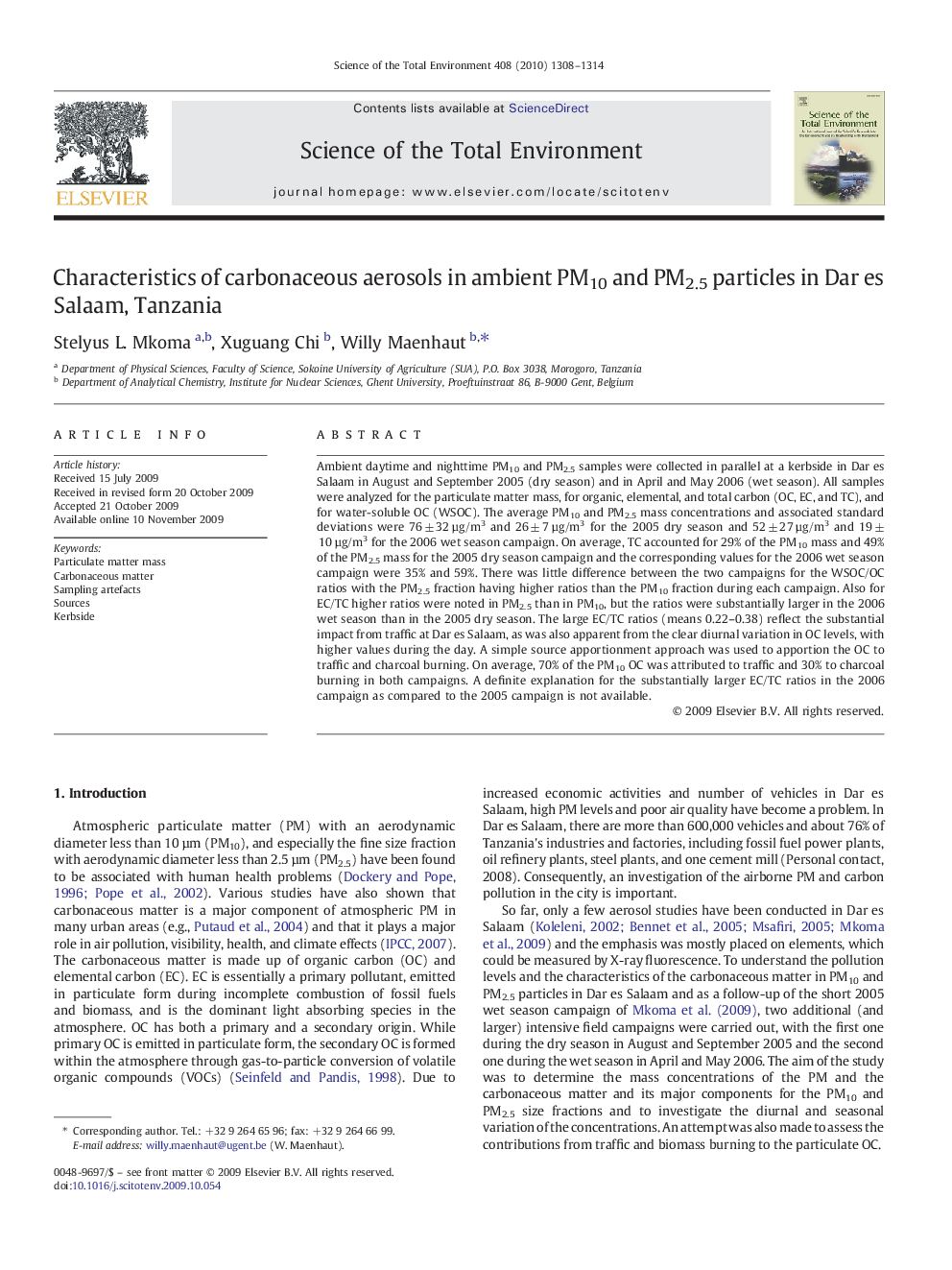| Article ID | Journal | Published Year | Pages | File Type |
|---|---|---|---|---|
| 4430576 | Science of The Total Environment | 2010 | 7 Pages |
Ambient daytime and nighttime PM10 and PM2.5 samples were collected in parallel at a kerbside in Dar es Salaam in August and September 2005 (dry season) and in April and May 2006 (wet season). All samples were analyzed for the particulate matter mass, for organic, elemental, and total carbon (OC, EC, and TC), and for water-soluble OC (WSOC). The average PM10 and PM2.5 mass concentrations and associated standard deviations were 76 ± 32 µg/m3 and 26 ± 7 µg/m3 for the 2005 dry season and 52 ± 27 µg/m3 and 19 ± 10 µg/m3 for the 2006 wet season campaign. On average, TC accounted for 29% of the PM10 mass and 49% of the PM2.5 mass for the 2005 dry season campaign and the corresponding values for the 2006 wet season campaign were 35% and 59%. There was little difference between the two campaigns for the WSOC/OC ratios with the PM2.5 fraction having higher ratios than the PM10 fraction during each campaign. Also for EC/TC higher ratios were noted in PM2.5 than in PM10, but the ratios were substantially larger in the 2006 wet season than in the 2005 dry season. The large EC/TC ratios (means 0.22–0.38) reflect the substantial impact from traffic at Dar es Salaam, as was also apparent from the clear diurnal variation in OC levels, with higher values during the day. A simple source apportionment approach was used to apportion the OC to traffic and charcoal burning. On average, 70% of the PM10 OC was attributed to traffic and 30% to charcoal burning in both campaigns. A definite explanation for the substantially larger EC/TC ratios in the 2006 campaign as compared to the 2005 campaign is not available.
